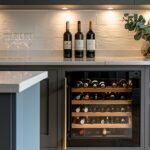Kitchen Renovation Mistakes to Avoid

The heart of the home beats in the kitchen, a place where meals are prepared, memories are made, and laughter is shared. Renovating this central space not only breathes new life into your home but significantly enhances its overall value and the quality of your lifestyle. The allure of transforming a kitchen from outdated to outstanding is undeniable, promising both aesthetic appeal and functional improvement. However, amidst the excitement of selecting new countertops, cabinetry, and state-of-the-art appliances, it’s easy to overlook the planning and foresight required for a successful renovation.
Embarking on a kitchen remodel is not without its challenges and potential pitfalls. From underestimated budgets to design oversights, certain mistakes can hinder the process, affecting both the project’s timeline and outcome. These missteps can transform what should be an exciting journey into a stressful ordeal, potentially compromising the very benefits you sought to achieve.
Failing to Plan Properly
Ignoring the Work Triangle
At the core of every efficient kitchen layout is the work triangle, an essential concept that seasoned designers and homeowners alike should not overlook. This principle involves the spatial arrangement between the three most used areas in the kitchen: the sink, the stove, and the refrigerator. Ideally, these should be placed in a triangular pattern to minimize unnecessary movement, making cooking and cleaning processes both smoother and faster. An optimal work triangle reduces the distances between these key points while ensuring that they are not too cramped or too spread out. Ignoring this layout can lead to a kitchen that feels awkward to navigate, potentially dampening the joy of cooking and even affecting meal preparation efficiency.
Overlooking Storage Needs
A common misstep in kitchen renovations is underestimating the importance of ample and accessible storage. Adequate storage solutions are pivotal not only for a tidy kitchen but for its functionality as well. This oversight can lead to cluttered countertops and cabinets, making the kitchen less enjoyable to use. Incorporating diverse storage options, such as pull-out drawers, overhead cabinets, and pantry spaces, can address varied storage needs, ensuring everything from utensils to appliances and groceries have a designated spot. It’s crucial to assess your storage requirements early in the planning phase to integrate sufficient, and perhaps even additional, storage capabilities, thereby creating a space that combines aesthetic appeal with practicality.
Neglecting Ventilation
The significance of a well-ventilated kitchen cannot be overstated. A robust ventilation system is key to removing cooking odors, smoke, and excess heat, thus maintaining a pleasant and healthy air quality within the home. Moreover, it helps in preventing grease and moisture accumulation, which can contribute to mold growth and damage to kitchen surfaces. Neglecting this aspect can lead to a kitchen that feels stuffy and unwelcoming, undermining the overall enjoyment and functionality of the space. Investing in a good quality range hood that vents outdoors is a wise decision for any kitchen renovation project, ensuring a cleaner, fresher environment.
Underestimating the Budget
Not Setting a Budget Cushion
One of the most common pitfalls in kitchen renovations is not allocating a budget cushion. It’s advisable to reserve an additional 10-20% of your total budget for unforeseen expenses that inevitably arise during the renovation process. Whether it’s structural issues uncovered during demolition, unexpected plumbing problems, or the sudden desire to upgrade materials, having a financial cushion can help manage these surprises without compromising the project’s completion or quality. Failing to account for these potential overruns can lead to stressful situations, where compromises and cuts may become necessary, potentially affecting the desired outcome of your kitchen remodel.
Going for the Lowest Bid Without Quality Consideration
While it’s tempting to choose the contractor offering the lowest bid, this decision can often lead to disappointing results. Quality and experience should be paramount considerations when selecting a contractor for your kitchen renovation. Opting for a lower bid without assessing the contractor’s credentials, past work, and client reviews might result in subpar craftsmanship, the use of inferior materials, and ultimately, a kitchen that does not meet your expectations or needs. Investing in a reputable and experienced contractor might initially seem costlier, but it pays off in the long run through the quality of work and peace of mind. Remember, the cheapest option is not always the most cost-effective in the end.
Overlooking Functionality for Aesthetics
Choosing Form Over Function
In the quest to create a visually stunning kitchen, it’s crucial not to sacrifice functionality for aesthetics. While the latest design trends and materials can give your kitchen a magazine-worthy look, they should not compromise the space’s usability and comfort. A functional kitchen design considers factors like an efficient workflow, ample storage, and easy maintenance, alongside a pleasing visual appeal. Balancing aesthetic choices with functional design elements ensures that your kitchen is not only beautiful but also practical. For instance, choosing a gorgeous countertop material that’s prone to stains or scratches may look appealing initially but can become a source of frustration during daily use. Remember, the most successful kitchen renovations are those that enhance both form and function, creating a space that’s as enjoyable to use as it is to behold.
Improper Lighting
Lighting plays a pivotal role in both the functionality and aesthetics of your kitchen. Proper lighting enhances the room’s ambiance while ensuring safety and efficiency during food preparation. A well-lit kitchen should incorporate three types of lighting: task, ambient, and accent. Task lighting, such as under-cabinet lights, illuminates work surfaces for safe cooking and food preparation. Ambient lighting provides overall light to the room, creating a warm and welcoming atmosphere. Accent lighting adds depth and dimension, highlighting architectural features or decorative elements. Neglecting the importance of a layered lighting scheme can lead to a kitchen that’s visually unappealing and difficult to navigate, undermining both its functionality and aesthetic appeal.
Following Trends Blindly
Trendy vs. Timeless Design Choices
While embracing current design trends can infuse your kitchen with a modern vibe, it’s important to discern between fleeting trends and timeless aesthetics. Trends come and go, and what’s in vogue today might appear dated in a few years. Making renovation choices based solely on the latest trends can result in a kitchen that feels outdated all too soon, potentially affecting its long-term appeal and value. Instead, consider incorporating elements that blend both trendy and timeless design aspects. Choose materials and designs that you love and that will stand the test of time, ensuring your kitchen remains both stylish and functional for years to come.
Personalization Over Resale Value
While personalizing your kitchen to reflect your unique style and preferences is important, it’s also wise to consider the potential impact on your home’s resale value. Highly personalized design choices, especially those that are unconventional, can be less appealing to future buyers, possibly affecting the saleability of your home. Striking a balance between customization and universal appeal is key. Opt for design elements that can easily be adapted or updated to suit different tastes. Incorporating neutral palettes for major features while expressing personal style through easily changeable elements like paint colors and accessories allows for both personalization and broad appeal, enhancing both your enjoyment of the space and its future resale value.
DIY Disasters
Overestimating DIY Skills
The allure of DIY projects is undeniable, offering the promise of savings and the satisfaction of personal accomplishment. However, overestimating one’s DIY skills can lead to significant kitchen renovation mistakes. Common DIY disasters include improper installations, poor quality finishes, and even structural damage, all of which can detract from the kitchen’s value and functionality. It’s crucial to realistically assess your skills and the complexity of the project before proceeding. While painting cabinets or changing hardware might be within the realm of enthusiastic amateurs, tasks involving electrical wiring, plumbing, or structural modifications require professional expertise. Knowing when to call in professionals can save time, money, and frustration, ensuring that the job is done safely and to a high standard.
Permit Pitfalls
Navigating the maze of building codes and permits can be daunting, but it’s an essential step in any kitchen renovation. Failing to obtain the necessary permits for structural, electrical, and plumbing work can lead to legal complications, fines, and even the requirement to undo completed work. Permits ensure that renovations comply with local building codes, safeguarding the safety and integrity of your home. Before beginning any significant modifications, research your local requirements or consult a professional. This due diligence can prevent costly and time-consuming legal issues, ensuring that your project progresses smoothly and is up to code.
Neglecting the Details
Forgetting the Backsplash
Often underestimated, the backsplash is more than just an aesthetic feature—it plays a crucial role in protecting your kitchen walls from spills, splatters, and stains. Beyond its functional benefits, a well-chosen backsplash can serve as a focal point, adding character and style to the kitchen. With a myriad of materials, colors, and patterns available, selecting the right backsplash provides an opportunity to infuse personality into the space while complementing the overall design theme. Neglecting this element can result in missed opportunities for both protection and style, underscoring the importance of considering every detail in your kitchen renovation.
Underestimating Hardware’s Impact
It’s easy to overlook the impact of hardware on the overall look and feel of your kitchen, yet details like cabinet handles and drawer pulls play a significant role in defining its style. Hardware acts as the jewelry of your kitchen cabinetry, providing a finishing touch that can enhance or detract from the design aesthetic. Swapping out hardware is a simple and cost-effective way to update the kitchen’s appearance, whether you’re aiming for a modern, traditional, or eclectic look. Underestimating the importance of these details can result in a finished project that lacks cohesion or fails to capture the desired style. Careful selection of hardware, therefore, is essential in achieving a polished and complete look for your kitchen renovation.
Transform Your Kitchen with Confidence: Choose Sultacon
s we conclude our exploration of common kitchen renovation mistakes, it’s clear that a successful renovation requires careful planning, attention to detail, and an awareness of the pitfalls that can derail even the most well-intentioned projects. From the initial design to the final touches, each step presents opportunities to enhance both the functionality and beauty of your kitchen, as well as potential challenges that can complicate your renovation journey.
Choosing the right partner for your renovation project is crucial. With Sultacon, you’re not just hiring a contractor; you’re partnering with a team of experienced professionals dedicated to transforming your kitchen into the heart of your home, seamlessly blending aesthetics with functionality. Our expertise in navigating the complexities of kitchen renovations ensures that your project will avoid the common disasters outlined in this post. Whether it’s ensuring a well-planned layout, selecting materials that balance beauty and durability, or managing the intricate details of permits and installations, Sultacon is here to guide you every step of the way – click here to get in touch with us.




